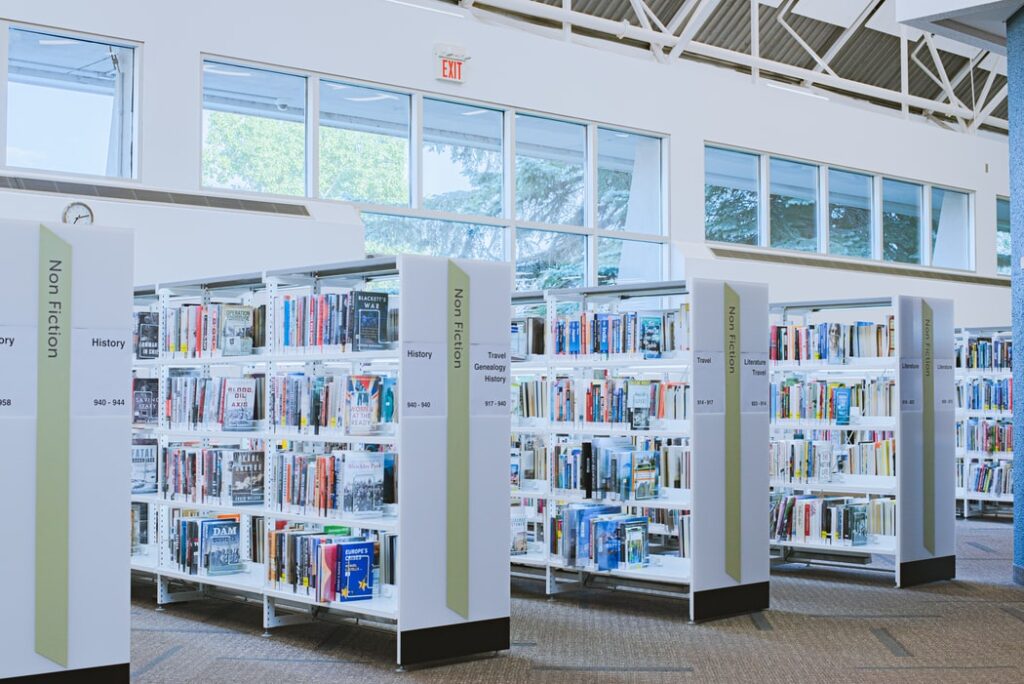
By Hannah Clarke
New figures show Canadians are reading more during the pandemic – and public libraries are there to meet the demand.
BookNet Canada’s ‘Borrow, Buy, Read: Library Use and Book Buying in Canada’ shows that some Canadians’ reading time versus mere leisure time increased (22 per cent leisure to 28 per cent reading).
Libraries across Canada continue to thrive throughout the course of the COVID-19 pandemic. Despite restrictions, they continue to provide as many resources as they can, especially within the GTA community. They’re also continuing to adapt to the current world circumstances.
Not even the various lockdown procedures and limitations of specific public services could bring them down.
Select community libraries in the GTA have already been offering curb-side pickups via appointment and drop boxes for their patrons. Some have even been open to the public for the majority of the week, with Sundays usually closed all day. They are also offering a lot of other services online, via phone calls or email.
Currently, there are three open Brampton branch locations – Chinguacousy, Four Corners and Springdale.
As for the Toronto Public Library, the Toronto Star reported back in June 2020 about their ‘curb-side popularity’. The TPL began curb-side pickups in that same month, for over 60 of their branches. The number of appointments patrons made with them grew rapidly from almost four thousand in three days to at least eight thousand after a week. Those numbers now are still going up.
Then in October 2020, Hannah Johnston and Monique Mongeon from LibraryData, an analysis tool created by BookNet Canada, hosted a podcast to share about the reading habits of Canadians over the past year.
Mongeon said that when they surveyed over six thousand Canadians about their borrowing/buying habits of 2019, they found that about 26 per cent of them borrowed at least one book, 22 per cent bought a book (with 36 per cent of those buyers also borrowing those books), and eight per cent did both.
Johnston went on to add what their Canadian Book Consumer survey has to say for early 2020. About 59 per cent of recent Canadian patrons checked out print books, 29 per cent checked out ebooks, and 12 per cent checked out audiobooks. By October, their numbers changed to 64 per cent, 35 per cent and 24 per cent respectfully.
On top of that, with COVID-19’s restrictions on library services, patrons who mainly borrowed books made up two-thirds of those visiting their local library during that past month. 13 per cent of those people were mainly also buying at least three books a month during the pandemic.
Their data also showed that the three most popular types of books being borrowed/bought during the pandemic were juvenile fiction/young adult fiction, adult fiction and adult non-fiction). Making up for about 6.5 million loans for print books from January to August 2020 alone.
October was also dedicated to ‘Library Month’, which recognizes the role and dedication of libraries and their employees. For this year, the Canadian Union of Public Employees also reported on the health and safety of library workers and their persistence, despite currently difficult working conditions.
Canadian libraries may still be going through a difficult shift on providing their services to their communities, and are still hoping for the day that the pandemic will lift so that things can return to normal.